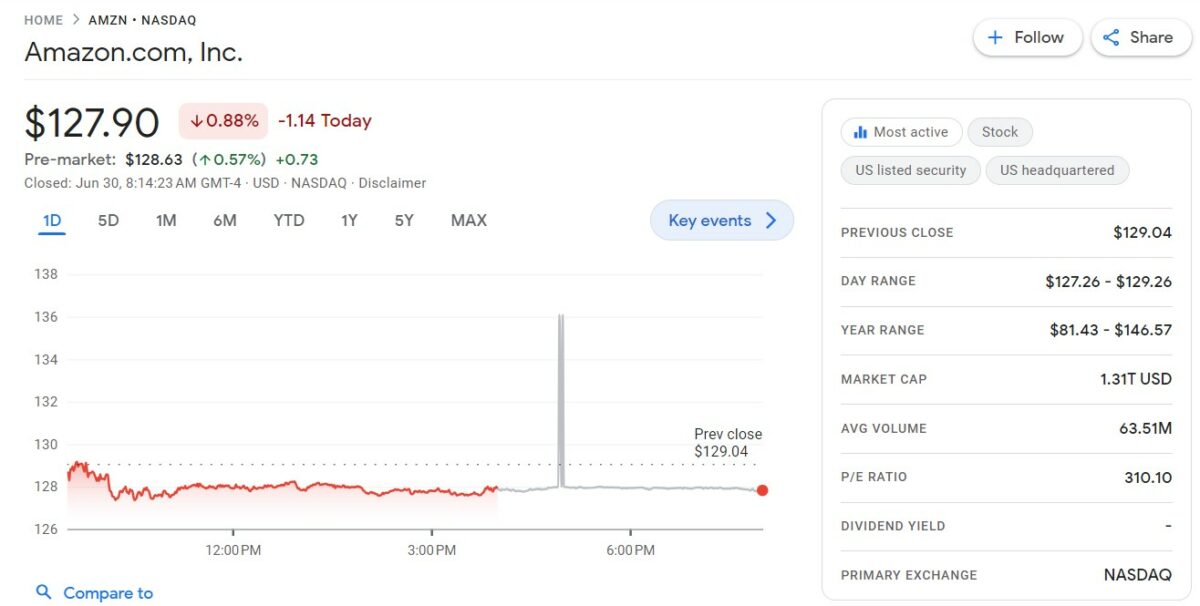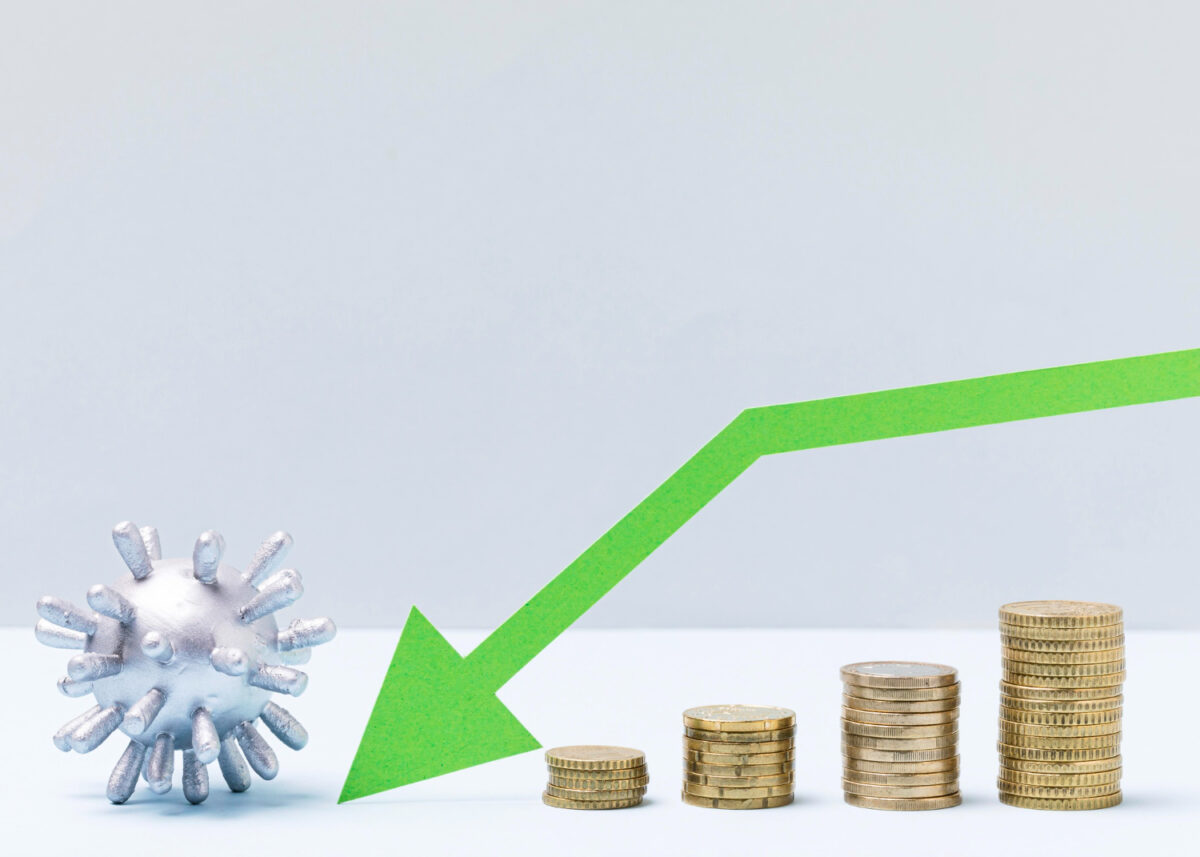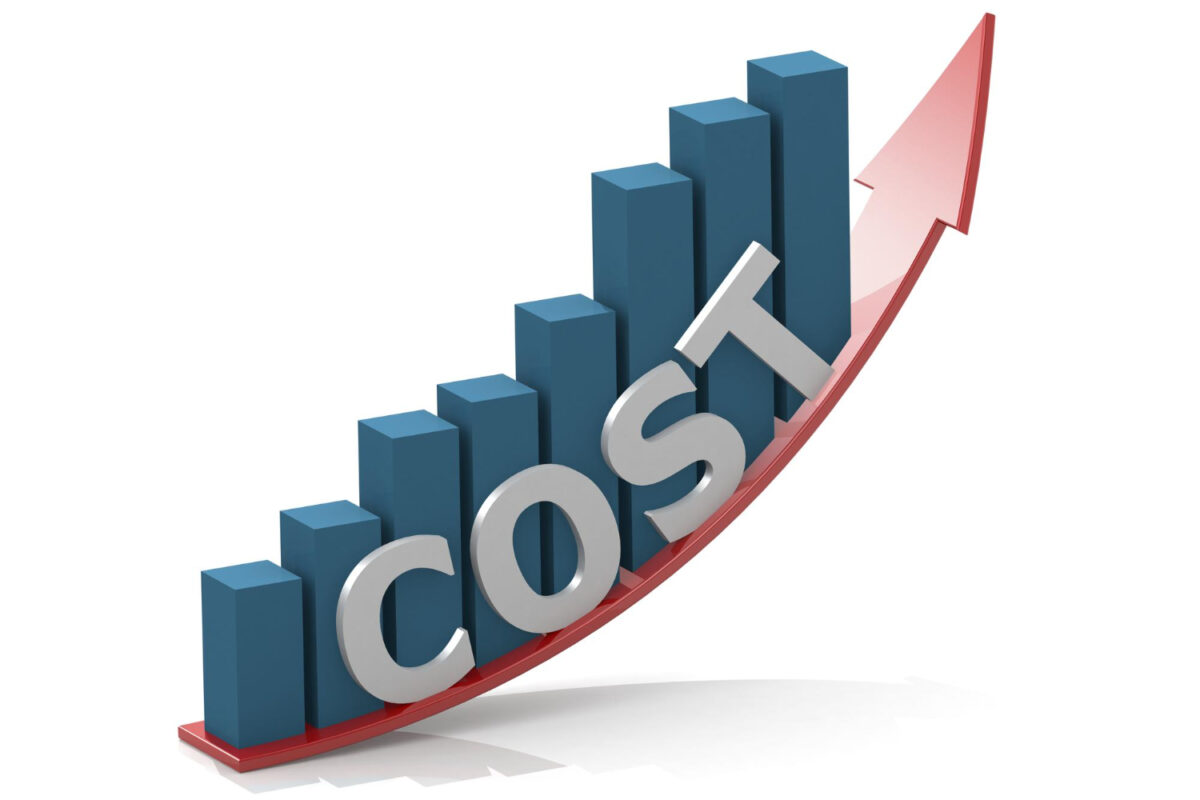Are you wondering why is Amazon stock down?
This year , Amazon’s stock has experienced a significant drop, and investors are concerned.
The e-commerce giant has been a top performer in the stock market for years, but it’s not immune to market fluctuations.
One of the reasons why Amazon’s stock is down is due to the company’s slower revenue growth.
In the first quarter of 2023, Amazon’s net sales increased by 13% year over year, which is a significant drop from the previous year’s 44% growth.
The pandemic played a role in the company’s revenue growth slowdown, as consumers shifted their spending habits.
Additionally, the rise in inflation and interest rates from the Federal Reserve has impacted Amazon’s stock and the broader stock market.
Another factor contributing to Amazon’s stock drop is the company’s rising costs.
Amazon’s investments in its fulfillment network, Amazon Web Services, and advertising have impacted its profitability.
The company’s disclosure policy and board of directors have also come under scrutiny from investors.
Despite these challenges, Amazon’s moat, or competitive advantage, remains strong, with its broad and loyal customer base and its vast e-commerce platform.
Post Contents
Why is Amazon Stock Down?

If you’re an Amazon stockholder, you might be wondering why the company’s stock is down.
Here are a few reasons that could be contributing to the decline:
Decrease in Revenue Growth
One factor that could be driving down Amazon’s stock price is a slowing in revenue growth.
In the third quarter of 2022, the company’s e-commerce segment grew at the quickest pace since the pandemic began, but the growth rate slowed down in the fourth quarter.
This could be due to increased competition in the e-commerce space, as well as supply chain disruptions and other challenges related to the pandemic.
Increased Costs
Another factor that could be contributing to the decline in Amazon’s stock price is increased costs.
The company has been investing heavily in areas like fulfillment centers, logistics, and technology, which has driven up expenses.
Additionally, the company has been facing higher labor costs and supply chain disruptions, which could be putting pressure on its bottom line.
Market Sell-Off
Finally, it’s worth noting that Amazon’s stock decline could be part of a broader market sell-off.
Inflation concerns and rising interest rates have been weighing on investor sentiment, and many stocks have been experiencing volatility as a result.
Amazon, with its large market capitalization, is not immune to these market forces.
Factors Contributing to Decrease in Revenue Growth

If you’re wondering why Amazon stock is down, there are several factors that have contributed to the decrease in revenue growth.
Here are some of the key factors that have impacted Amazon’s revenue growth:
Pandemic Impact on Consumer Behavior
The COVID-19 pandemic has had a significant impact on consumer behavior, and this has affected Amazon’s revenue growth.
During the pandemic, many consumers shifted their spending habits towards essential items, such as groceries and household supplies.
This resulted in slower growth for Amazon’s non-essential categories, such as apparel and electronics.
Additionally, the pandemic resulted in supply chain disruptions, which impacted Amazon’s ability to deliver products to customers in a timely manner.
Competition from Other E-commerce Platforms
Amazon faces stiff competition from other e-commerce platforms, such as Walmart and Target.
These companies have made significant investments in their e-commerce capabilities, and they are gaining market share in key categories.
This has resulted in slower growth for Amazon, as consumers have more options for where they can shop online.
Slower Growth of Amazon Web Services
Amazon Web Services (AWS) has been a key driver of revenue growth for Amazon in recent years.
However, the growth of AWS has slowed down in recent quarters.
This is due to increased competition in the cloud computing market, as well as pricing pressure from competitors.
As a result, AWS is no longer growing as quickly as it once was, which has impacted Amazon’s overall revenue growth.
Increased Costs

If you’re wondering why Amazon’s stock is down, one of the reasons is increased costs.
This section will explore some of the factors contributing to the rise in costs.
Higher PPE Costs
Personal protective equipment (PPE) costs have gone up due to the pandemic.
Amazon has had to invest in PPE to protect its workers and customers.
This has increased the company’s operating costs significantly.
Expanding Consumer Business
Amazon has been expanding its consumer business, which has led to higher costs.
The company has been investing in new products and services to attract more customers.
This has resulted in increased marketing and advertising costs.
Fulfillment Network Costs
Amazon has invested heavily in its fulfillment network to improve delivery times and customer satisfaction.
This has led to higher costs, as the company has had to build new warehouses and hire more staff to handle the increased volume of orders.
Market Sell-Off

If you’ve been following the stock market, you’ve probably noticed that Amazon’s stock has been on a downward trend lately.
The recent sell-off of Amazon’s stock has been attributed to a number of factors, including interest rates, inflation concerns, and technical analysis.
Impact of Interest Rates
One of the main factors contributing to the sell-off of Amazon’s stock is the impact of interest rates.
As interest rates rise, investors become more cautious about investing in stocks.
This is because higher interest rates make it more expensive for companies to borrow money, which can lead to lower profits.
Inflation Concerns
Another factor contributing to the sell-off of Amazon’s stock is inflation concerns.
Inflation occurs when the prices of goods and services rise over time.
This can lead to higher costs for companies, which can lead to lower profits.
In addition, inflation can lead to higher interest rates, which can also impact stock prices.
Technical Analysis
Finally, technical analysis is another factor that is contributing to the sell-off of Amazon’s stock.
Technical analysts use charts and other tools to analyze the price movements of stocks.
They look for patterns and trends that can help them predict future price movements.
In the case of Amazon’s stock, technical analysts may be seeing signs of a bearish trend, which could be contributing to the sell-off.
Key Takeaways
If you’re an Amazon investor, you’ve likely noticed that the company’s stock has been on a downward trend.
Here are a few key takeaways that may help you understand why:
- Amazon’s stock is down 45% from its all-time high, which may seem alarming at first. However, it’s important to remember that the company has experienced similar dips in the past and has always bounced back.
- One reason for the recent drop in Amazon’s stock price is concerns about the company’s valuation. Some investors believe that the stock may be overvalued, which has led to a decrease in demand and a subsequent decrease in price.
- Another factor that may be contributing to the decline in Amazon’s stock is the company’s recent layoffs. Amazon laid off 10,000 workers, primarily in its Alexa division, as it underperformed expectations. This news may have shaken investor confidence in the company’s ability to continue growing and innovating.
- Finally, Amazon’s recent financial results and guidance may also be contributing to the decline in its stock price. The company reported first-quarter financial results and issued second-quarter guidance below analyst estimates, which has led to a decrease in demand for the stock.
Overall, it’s important to remember that fluctuations in stock prices are normal and that Amazon has a track record of bouncing back from dips.
However, it’s always a good idea to stay informed about the factors that may be impacting the company’s stock price and to make investment decisions accordingly.





























